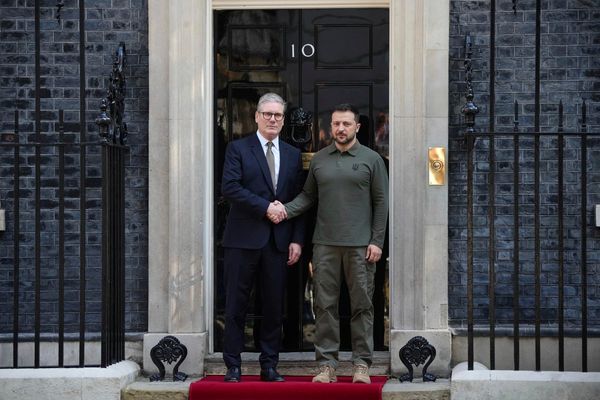
By 2050, 68 percent of the world’s population will live in urban areas, up from today’s 55 percent. One third of this increase is projected to happen in just three countries — China, Nigeria and India. Yet, as urban populations grow, a big part of society continues to be marginalised and excluded — people with disabilities.
Unlike any other marginalised group, anyone can become a member of the disability community at any point in their life. People can develop a physical disability because of an accident, illness, or simply, old age.
According to the United Nations, people with disabilities include those who have “long-term physical, mental, intellectual or sensory impairments, which in interaction with various barriers, may hinder their full and effective participation in society on an equal basis with others”.
Out of the more than one billion people globally with some form of disability, 80 percent live in the developing world.
Mumbai, India’s financial and entertainment capital, is home to more than 12.5 million people.
According to the 2011 census, in the western state of Maharashtra, of which Mumbai is the capital, about 2.6 percent of the population lives with a disability. The true number, however, is believed to be much higher due to underreporting by census and government workers and the stigma around disability.
People with disabilities in Mumbai face numerous obstacles when it comes to accessibility and mobility.
The city’s streets are some of the busiest in the world, and overcrowding, flooding and poorly maintained infrastructure make it incredibly hard for people with disabilities to access the city’s public transport system.
So what does it mean to live in Mumbai, one of the world’s megacities, with a disability?

Getting around Mumbai – a snapshot
The local commuter train system in Mumbai is the oldest in Asia and was inaugurated in 1853. Today, more than 7.5 million people use this transport system daily. It is inexpensive to use and is one of the world’s biggest and busiest commuter train networks.
Throughout the years, however, the system has not kept up with the growing number of commuters. Today, on average, the trains are packed at 2.6 times their capacity. With such a strain on the system, accidents are frequent with people falling off packed trains, getting hit while crossing the tracks or even dying in stampedes. The gaps between the train and the platform can be dangerously wide.
These dangers prevent people with disabilities from relying on this popular option. And those who brave the crowds and overcome other accessibility issues, such as steep ramps or a lack of elevators, for example, often find the reserved compartments for people with disabilities filled with regular commuters.
Mumbai also has a public bus system which is marginally accessible. The system is well connected with more than 400 routes across the city, and buses have designated seats for passengers with disabilities, for example, 3 seats are reserved in the double-decker buses with a seating capacity of 90 passengers.

However, accessibility remains an issue. As of December 2020, less than 7 percent of public buses in the country were fully accessible for wheelchair users – with the provision of ramps, reserved space for wheelchairs and digital and audio announcements for stops – according to the Social Justice and Empowerment Ministry’s Department of Empowerment of Persons with Disabilities.
Other transport options in Mumbai are the iconic kaali-peeli (black and yellow) taxis, or for shorter commutes, auto-rickshaws. The presence of private taxi companies Ola Cabs and Uber has grown and they have launched auto-rickshaw services of their own.
However, these modes of transport are too expensive for most people to use daily, while the app-based services are inaccessible for those without smartphones. In addition, drivers and other workers employed with taxi services are often not adequately trained to assist people with disabilities.
To address the lack of accessibility in Mumbai, several startups have launched mobility initiatives.
For example, in 2019, Ravindra Singh, who was diagnosed with post-polio paralysis when he was eight months old, started myUDAAN, an on-demand wheelchair service. Through the app, users can book assistants, buy mobility products, and check accessible places. Wheelchair taxi and ambulance services such as EzyMov, started in 2015, and MobiCab, launched in 2016, were set up for people with disabilities, but due to their prices, are only accessible to wealthier users. For example, a train ticket costs about 5 Indian rupees ($0.07) while the base fare for a service like EzyMov can cost about 60 times that price.
Slow progress for a more accessible India
In December 2015, the government of Prime Minister Narendra Modi launched the Accessible India Campaign. The campaign focuses on developing an “accessible physical environment, transportation system and Information & communication ecosystem”.
Among its aims was making 25 percent of public buses fully accessible by 2018, but with progress falling behind schedule, this deadline has been extended to June 2022. Likewise, its goal of making at least 50 percent of government buildings accessible to people with disabilities in the national capital, New Delhi, as well as in each state capital by May 2018 was not met. More than two years after the campaign launched, only 3 percent of buildings had become accessible.
In March 2021, the government launched the Sugamya Bharat mobile app, a nationwide crowdsourcing platform to address the issues faced by people with disabilities in public spaces. Users can register accessibility-related concerns or provide positive feedback as well as receive public health-related information. But out of the 360 complaints forwarded to the authorities responsible for taking action, just 26 were resolved by September 2021.

Inaccessible Cities: Mumbai
Making cities such as Mumbai better accessible for people of all abilities is the first step towards true equity and inclusion.
Without options to freely and independently travel around and access public spaces in a city like Mumbai, people with disabilities remain marginalised. They lack access to education, healthcare, employment, housing and systems of social protection. They face stigma, discrimination and even violence.
To make Mumbai more accessible, survey-taking must become more accurate, gaps between trains and platforms should be reduced and more should be done to meet mobility and building access targets.
For women with disabilities, access in Mumbai is also connected to protection against sexual violence. According to Nidhi Goyal, a blind comedian and disability rights activist, helpful Mumbaikars is what makes the city slightly more accessible. However, this means that as a person with a disability you have to fully trust the stranger. As an activist, Nidhi has encountered many reports from blind women who were groped or harassed when being helped.
Learn more about life for people with disabilities in Mumbai by joining Nidhi as she navigates Mumbai in “Inaccessible Cities”, the latest interactive web experience by AJ Contrast, Al Jazeera Digital’s media innovation studio.
To understand the state of accessibility in two other megacities, join Rebecca Lamorte, a former city council candidate from New York City, and Olajumoke Olajide, a disabled athlete from Lagos.
With additional reporting by Asmita Bakshi.







